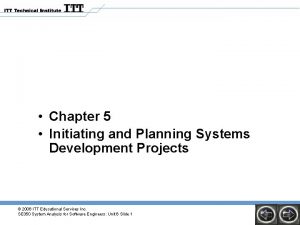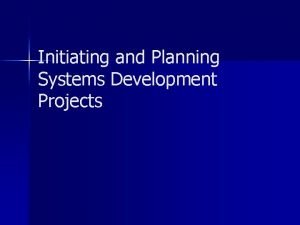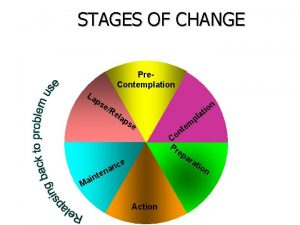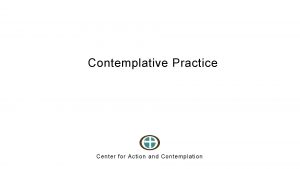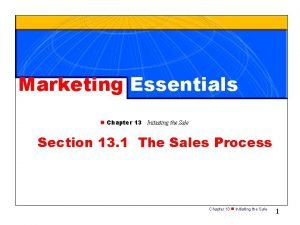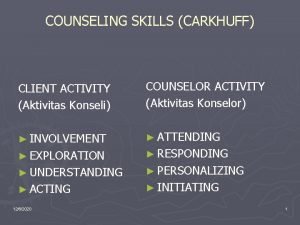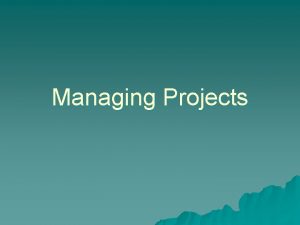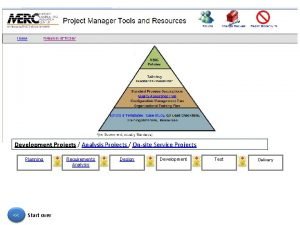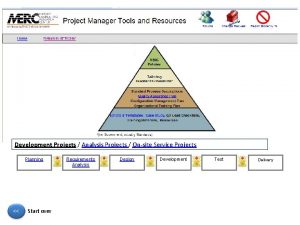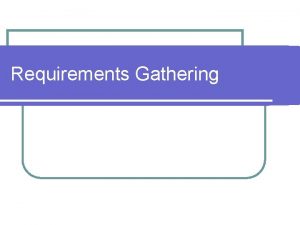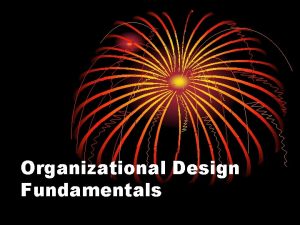Initiating and Planning Systems Development Projects Contemplative Questions

















- Slides: 17

Initiating and Planning Systems Development Projects

Contemplative Questions n n n What deliverables are produced in early stages of a project? What is the scope of this project? What should the scope be? If I were a member of the steering committee or an investor… would I invest in this project? If I were a project manager… would I stake my reputation on this project? Is it feasible? If I were an analyst… what is the problem being solved here? Is this really the problem, or just a symptom? What is the real problem the proposed system is trying to address?

Initiation vs. Planning n n n For any single project… – – When is it initiated? When does planning start? – – A project team is established. The project is given a number for tracking purposes. The project may be given a name. A relationship with a customer may be developed, or an existing relationship may continue. “Formal” Project Initiation Plan – Procedures are established for management, decisionmaking, communication. – Milestones are identified and possibly negotiated.

What are the deliverables and outcomes during this stage? n Baseline Project Plan (BPP) n A comprehensive plan containing all work associated with a project. Sections of this deliverable may describe – – – The Scope of the new system Benefits anticipated from the new system Costs to be incurred, both developmental (one-time) and operational (recurring) – Risks – Resources required n Statement of Work (SOW) n A much simpler document that describes the work to be performed

Scope, risk, etc. For whose benefit is the BPP created? n Why do we want to know these things? Have we forgotten anything? n n The scope of the new system n Benefits anticipated from the new system n Costs to be incurred, both developmental (one-time) and operational (recurring) n Risks n Resources required

Assessing Risk n For any project, we need to understand the degree of associated risk. A measure of risk is feasibility. – Feasibility (defn): The capability of being accomplished, doable or brought about. n Six Categories of feasibility: – – – Technical Operational Schedule Legal and contractual Political Economic Which category is most important? Which one is the most likely predictor of the feasibility of a project?

Technical Feasibility n Assessment of the organization’s ability to construct a proposed system. Technical feasibility is a function of: – Development group’s experience with hardware and software – Development group’s experience with the application, i. e. the business rules – Project size – Project structure – User group’s experience with development projects and the application area n Is the correlation (+) or (-) for each factor? – e. g. As project size increases, risk will ____. (increase, decrease).

Risk Factors

Other Types of Feasibility n n Assessing Technical Feasibility is like asking “Can we build it? ” or “Are we capable of building the system? ”. What questions are being asked for these? – Operational Feasibility n Assessment of how a proposed system solves business problems or takes advantage of opportunities – Schedule Feasibility n Assessment of time frame and project completion dates with respect to organization constraints for affecting change

Still More Types of Feasibility n What questions are being asked for these? – Legal and Contractual Feasibility n Assessment of legal and contractual ramifications of new system – Political Feasibility n Assessment of key stakeholders in organization’s view toward proposed system

Economic Feasibility Assessing the financial benefits and costs for a project n Consider n – Tangible benefits – Intangible benefits – Tangible costs – Intangible costs

Economic Feasibility n Four common measures of economic feasibility – Payback Period (the book refers to this as a break -even ratio) – IRR (Internal rate of return) – NPV (Net present value) – ROI (Return on investment) For each of the above, what is the unit of measure? Is “more” of the UOM better or worse?

Cookbook approach n 1. e. g. P&E 6. 4, 6. 10 (perhaps quiz questions? ) Create a matrix: a) Create a column for each year of the project b) Create a row (section) for the following: i) Cash inflows (benefits) ii) Cash outflows (costs) - Development (one-time) costs in early year(s) - Operating (recurring) costs each year after, for the life of the project c) Discount everything based on the Time Value of Money

Cookbook approach (cont. ) 2. Do the calculations – Payback Period. Find the point where cash in-flows exceed cash outflows. Use interpolation to find the remainder of the final year. – IRR – ROI – NPV

Definitions n Payback Period: n IRR (Internal rate of return): n NPV (Net present value): n ROI (Return on investment): – The length of time required to recover the cost of an investment (e. g. purchase of computer software or hardware), usually measured in years – The discount rate for which the total present value of future cash flows equals the cost of the investment – The arithmetic sum of discounted cash flows (all inflows and outflows) that will result from an investment decision or income stream – The "Return" (incremental gain) from an action, divided by the cost of that action

Question n Are projects with a negative return ever adopted? – Is there a cost of “doing nothing”? n What is the real comparison to be made?

Important Considerations n Steering committees usually prefer more analysis rather than less. – They also prefer quality over quantity. * n Additional analyses can be performed: – – The best case scenario The worst case scenario The most likely case scenario Weight the probability of each to obtain a single number. * So does your instructor.
 Initiating and planning systems development projects
Initiating and planning systems development projects Initiating and planning systems development projects
Initiating and planning systems development projects Potential development projects can be identified by
Potential development projects can be identified by Pre contemplation
Pre contemplation Mindfuladd
Mindfuladd Contemplation action maintenance
Contemplation action maintenance Contemplative orders
Contemplative orders Contemplative pedagogy
Contemplative pedagogy Contemplative dialogue
Contemplative dialogue Center for contemplative action
Center for contemplative action Leadership challenges for the youth of today nstp
Leadership challenges for the youth of today nstp Crm project plan
Crm project plan Marketing essentials chapter 13
Marketing essentials chapter 13 Bcf model conflict resolution
Bcf model conflict resolution Requirement validation in software engineering
Requirement validation in software engineering Knapps relational model
Knapps relational model Attending responding personalizing initiating
Attending responding personalizing initiating Initiating process group
Initiating process group
